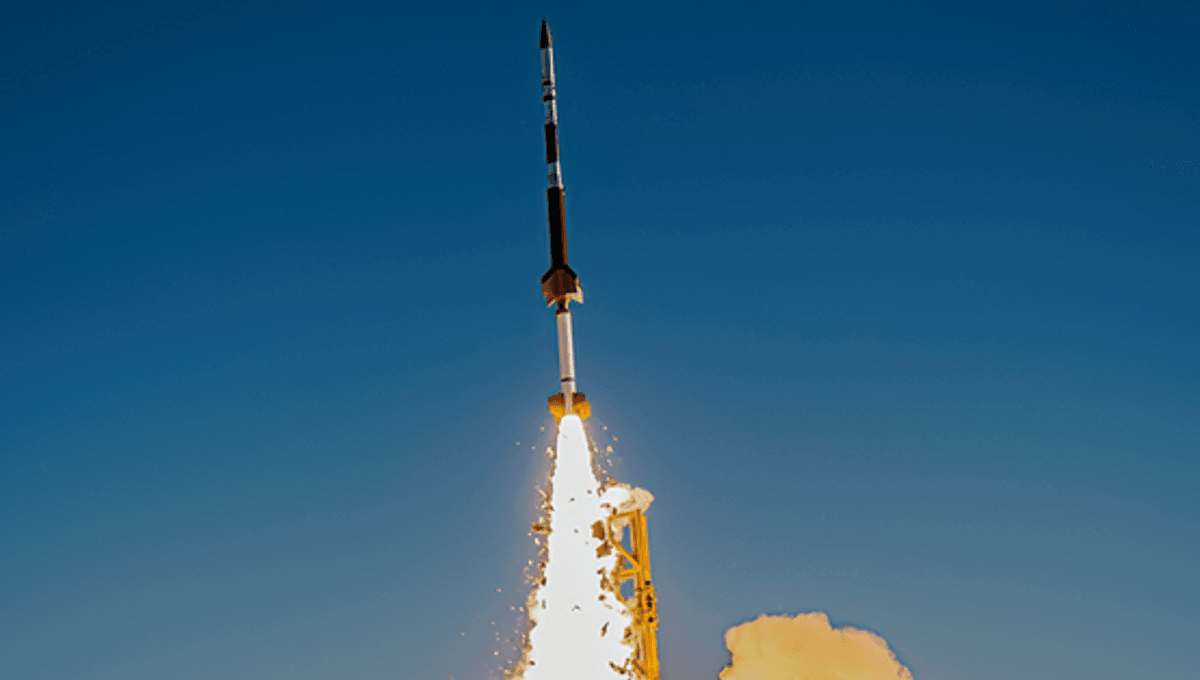
The Earth has an electric field that allows atmospheric particles to escape near the poles. Yet despite the concept being proposed around the time humans were first reaching space, it’s never been verified, let alone measured, until now. In the course of a suborbital flight, NASA’s Endurance rocket has done both.
Planetary scientists proposed an electric field, to go with the Earth’s gravitational and magnetic counterparts, to explain the escape of some particles to space. While weak compared to its known counterparts, it could also be quite important.
The field is expected to exist because electrons, being lighter and therefore less affected by gravity than positive ions, are more likely to escape into space. This should create a weak negative electric potential far above the Earth, leaving a slight positive charge closer to the surface. Now there is hard evidence that this occurs.
You’re in no danger of getting electrocuted from the field. The Endurance measured an electric potential of 0.55 volts – less than most pocket batteries – over a range of 518 kilometers (322 miles) in altitude. Yet that might be enough to have had a major impact on the Earth’s development.
Satellites have detected particles escaping the planet, but only over the North and South poles. Since gravity is pretty much the same over any part of the Earth, that needs a little explaining. One way atoms and molecules can escape a gravitational field is if they gain enough kinetic energy, but that is more likely the hotter things are. The polar regions are not known for high temperatures, so there had to be another explanation.
“Something had to be drawing these particles out of the atmosphere,” Dr Glyn Collinson of the Goddard Space Flight Center in a statement. An electric field was the only answer that made sense.
Remarkably, such a field could still produce this polar wind while being exceptionally weak, and estimates of its strength were below the capacity for detection of instruments we’d sent to the edge of space. Collinson helped design something he and his team thought would be suitable.
They launched it from the only base close enough to the poles to do the trick, off northern Norway. “Svalbard is the only rocket range in the world where you can fly through the polar wind and make the measurements we needed,” said Professor Suzie Imber of the University of Leicester.
Endurance reached a height of 768 kilometers (477 miles), higher than the International Space Station or Hubble, and splashed down in the Greenland Sea. It measured the change in potential on both the up and down journey between a height of 250 kilometers (155 miles) and the peak.
“A half a volt is almost nothing – it’s only about as strong as a watch battery,” Collinson said. “But that’s just the right amount to explain the polar wind.”
The direction of the field attracts electrons to the ground but pushes positively charged hydrogen ions into space. Weak as it is, gravity is even weaker – by a factor of 10 – on such light particles. At the locations Endurance measured the field is “enough to launch [the ions] upwards into space at supersonic speeds,” said Goddard’s Alex Glocer.
Consequently, the Earth’s hydrogen stocks have experienced a tug of war, steadily depleted by the polar wind the field creates, but enhanced by the occasional meteorite carrying water or other hydrogen-rich molecules.
An atmosphere is essential for us, and probably for any life. However, too much hydrogen could have negative effects. It’s at least possible that by maintaining the balance, the polar wind has kept our home habitable.
The field applies the same force to other positively charged particles – more so for those with 2+ charges – but gravity pulls on them more strongly. Consequently, an oxygen ion will not be forced into space, but will behave as if it is half as heavy as it really is, the rest of its weight offset by the field. As a result, the team conclude, the portion of the atmosphere known as the ionosphere is more puffed up than it would be otherwise, maintaining density to greater heights, including a 3,800 percent increase in oxygen ions reaching the magnetosphere.
“Any planet with an atmosphere should have an ambipolar field,” Collinson said. “Now that we’ve finally measured it, we can begin learning how it’s shaped our planet as well as others over time.” How the fields differ between planets is a topic the team are keen to explore.
Previous modeling suggested the field should have a minimum strength of 0.4 V, but that this could be increased during daylight by high energy photons. Values above 2 V had been ruled out by previous experiments, but we have reason to suspect that on Mars and Venus the fields are much larger, measured in tens of volts. This makes the finding, that even in the northern summer with 24-hour daylight the value is not far above the 0.4 V, significant.
The study is published open access in Nature.
Source Link: NASA Has Finally Measured Earth’s Long-Suspected Polar Electric Field